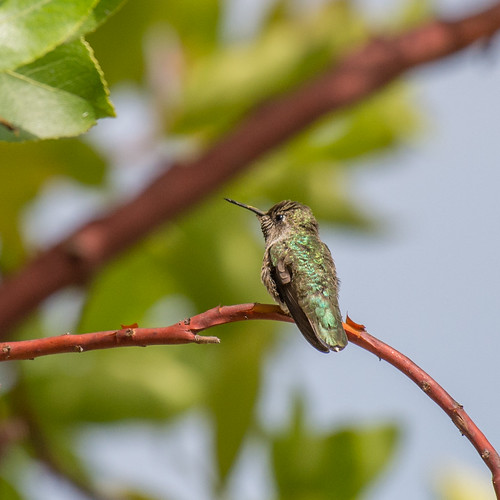stata lineage via classical 1R and 2R WGDs, with STAT5 and STAT6 being generated from the statb lineage as a result of one of these WGDs. However, an alternative model can be proposed that takes into account the observed proximity within this gene family. This proposes that the stata and statb precursors originally lay adjacent as a consequence of local duplication, with the stata-statb precursor subsequently duplicated en bloc, such that 1R and 2R collectively generated four copies of this cluster, only three of which were retained: a STAT3-STAT5 cluster, a STAT2STAT6 cluster, and a STAT1-STAT4 cluster. In Nutlin3 support of this model, the first two of these clusters maintain the appropriate statastatb precursor configuration. The latter cluster consists of two stata-related genes, although this arrangement can be explained through sequential gene loss followed by local duplication of the remaining gene, or via `gene conversion’ of the adjacent STAT genes, as has been reported for a segment of the adjacent mammalian STAT5 genes. Analysis of additional organisms intermediate between urochordates and higher vertebrates will definitively resolve this issue. Finally, duplicates for both stat1 and stat5 have been retained following 3R in teleosts, with additional local duplications of stat1 leading to a pseudogene in zebrafish, while local duplication has also occurred along the mammalian lineage with respect to the STAT5 genes. Interpretation of SOCS gene evolution is also complex, since certain gene subsets appear to have been specifically  lost in some lineages. Our model suggests that the common ancestor of protostomes and deuterostomes possessed four members of this family: a socs1/socs2/socs3/cish intermediate, a socs4/socs5 intermediate as well as distinct socs6 and socs7 precursors. This is supported by analysis of the more primitive sea anemone genome, which contains exactly this complement of socs genes. Additionally, a SOCS2-like gene, resembling the socs1/socs2/socs3/cish intermediate, has been described in the European honey bee, flour beetle, along with various molluscs and crustaceans Evolution of JAK-STAT Pathway Components . Thus, the invertebrate lineage of protostomes appears to possess a socs1/socs2/socs3/cish intermediate, lost in the fruit fly, whilst protostomes also possess a socs4/socs5 intermediate, as PubMed ID:http://www.ncbi.nlm.nih.gov/pubmed/22189475 well as divergent socs6 and socs7 orthologs, whereas the urochordate lineage of deuterostomes has retained the socs1/socs2/socs3/cish intermediate, as well as socs6 and socs7 orthologs, but has specifically lost the socs4/socs5 intermediate. Subsequent expansion of the SOCS family within vertebrates has been variable along the different lineages, although WGDs again represent the key driving force. The SOCS1/SOCS2/SOCS3/CISH lineage follows the classical WGD expansion during 1R and 2R, generating SOCS1, SOCS2, SOCS3 and CISH, via SOCS1/SOCS3 and SOCS2/CISH intermediates, with additional socs3 and cish paralogs retained in teleosts following 3R. The SOCS4/SOCS5 intermediate has only duplicated once during 1R and 2R, with the presence of two distinct socs4/socs5 genes in the genome of Petromyzon marinus suggesting that the duplication occurred via 1R. The 3R event produced paralogs for both socs4 and socs5 that have been retained in zebrafish. In contrast, no expansion of socs6 or socs7 genes has occurred following any of the three WGD events. From this analysis it is evident that diversification of individual JAK-STAT pathwa
lost in some lineages. Our model suggests that the common ancestor of protostomes and deuterostomes possessed four members of this family: a socs1/socs2/socs3/cish intermediate, a socs4/socs5 intermediate as well as distinct socs6 and socs7 precursors. This is supported by analysis of the more primitive sea anemone genome, which contains exactly this complement of socs genes. Additionally, a SOCS2-like gene, resembling the socs1/socs2/socs3/cish intermediate, has been described in the European honey bee, flour beetle, along with various molluscs and crustaceans Evolution of JAK-STAT Pathway Components . Thus, the invertebrate lineage of protostomes appears to possess a socs1/socs2/socs3/cish intermediate, lost in the fruit fly, whilst protostomes also possess a socs4/socs5 intermediate, as PubMed ID:http://www.ncbi.nlm.nih.gov/pubmed/22189475 well as divergent socs6 and socs7 orthologs, whereas the urochordate lineage of deuterostomes has retained the socs1/socs2/socs3/cish intermediate, as well as socs6 and socs7 orthologs, but has specifically lost the socs4/socs5 intermediate. Subsequent expansion of the SOCS family within vertebrates has been variable along the different lineages, although WGDs again represent the key driving force. The SOCS1/SOCS2/SOCS3/CISH lineage follows the classical WGD expansion during 1R and 2R, generating SOCS1, SOCS2, SOCS3 and CISH, via SOCS1/SOCS3 and SOCS2/CISH intermediates, with additional socs3 and cish paralogs retained in teleosts following 3R. The SOCS4/SOCS5 intermediate has only duplicated once during 1R and 2R, with the presence of two distinct socs4/socs5 genes in the genome of Petromyzon marinus suggesting that the duplication occurred via 1R. The 3R event produced paralogs for both socs4 and socs5 that have been retained in zebrafish. In contrast, no expansion of socs6 or socs7 genes has occurred following any of the three WGD events. From this analysis it is evident that diversification of individual JAK-STAT pathwa
